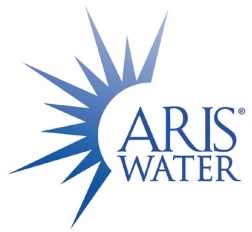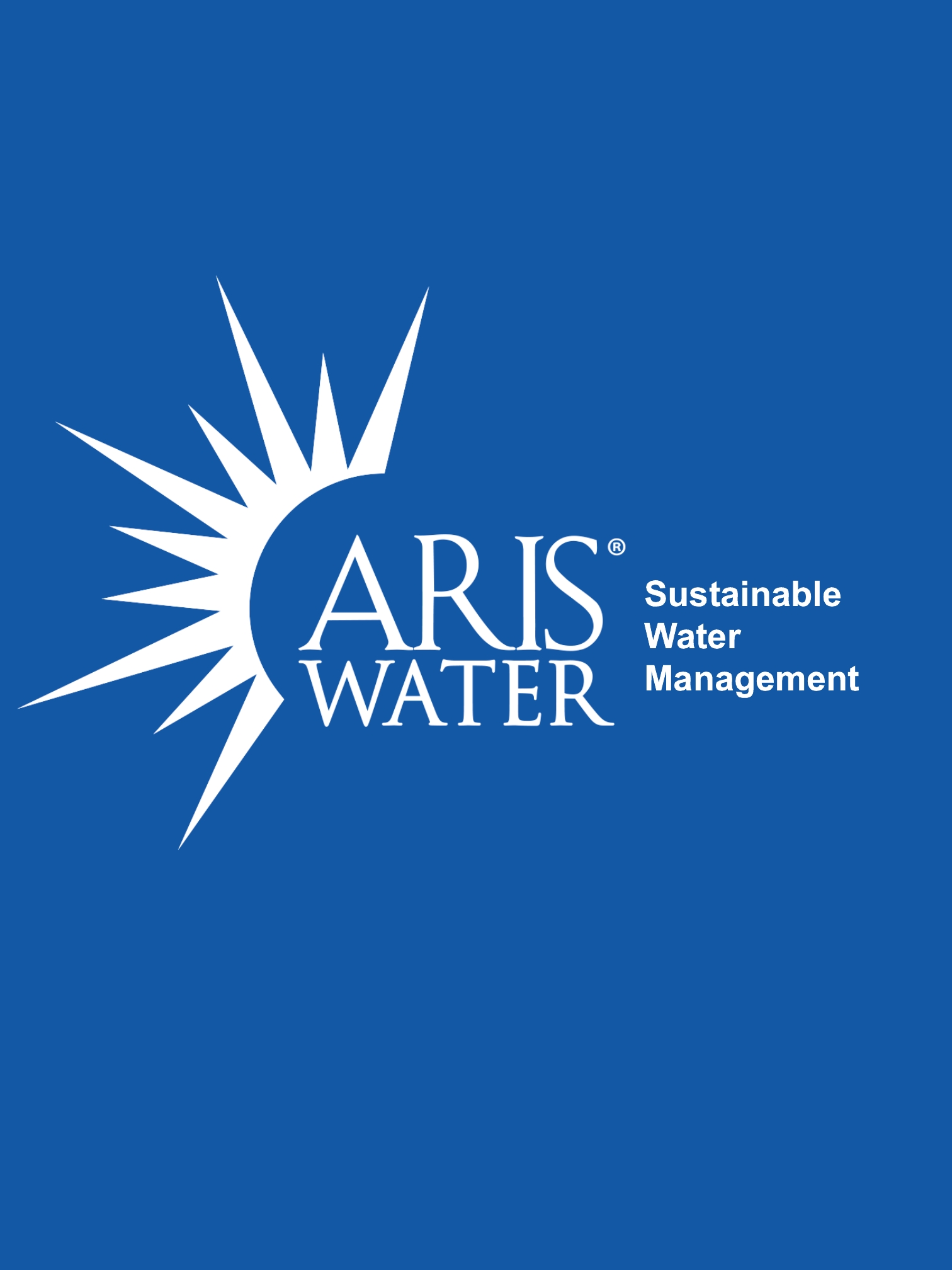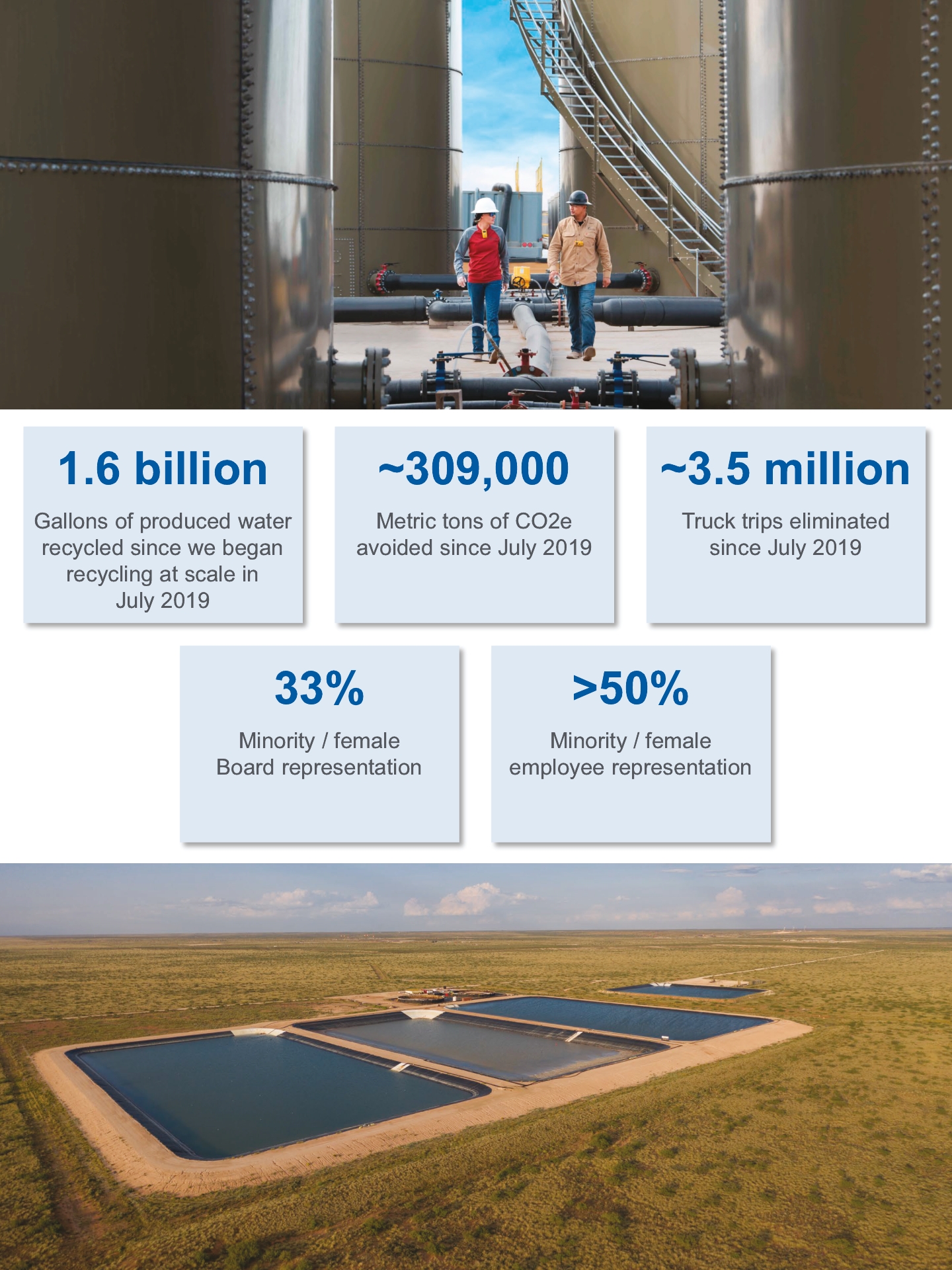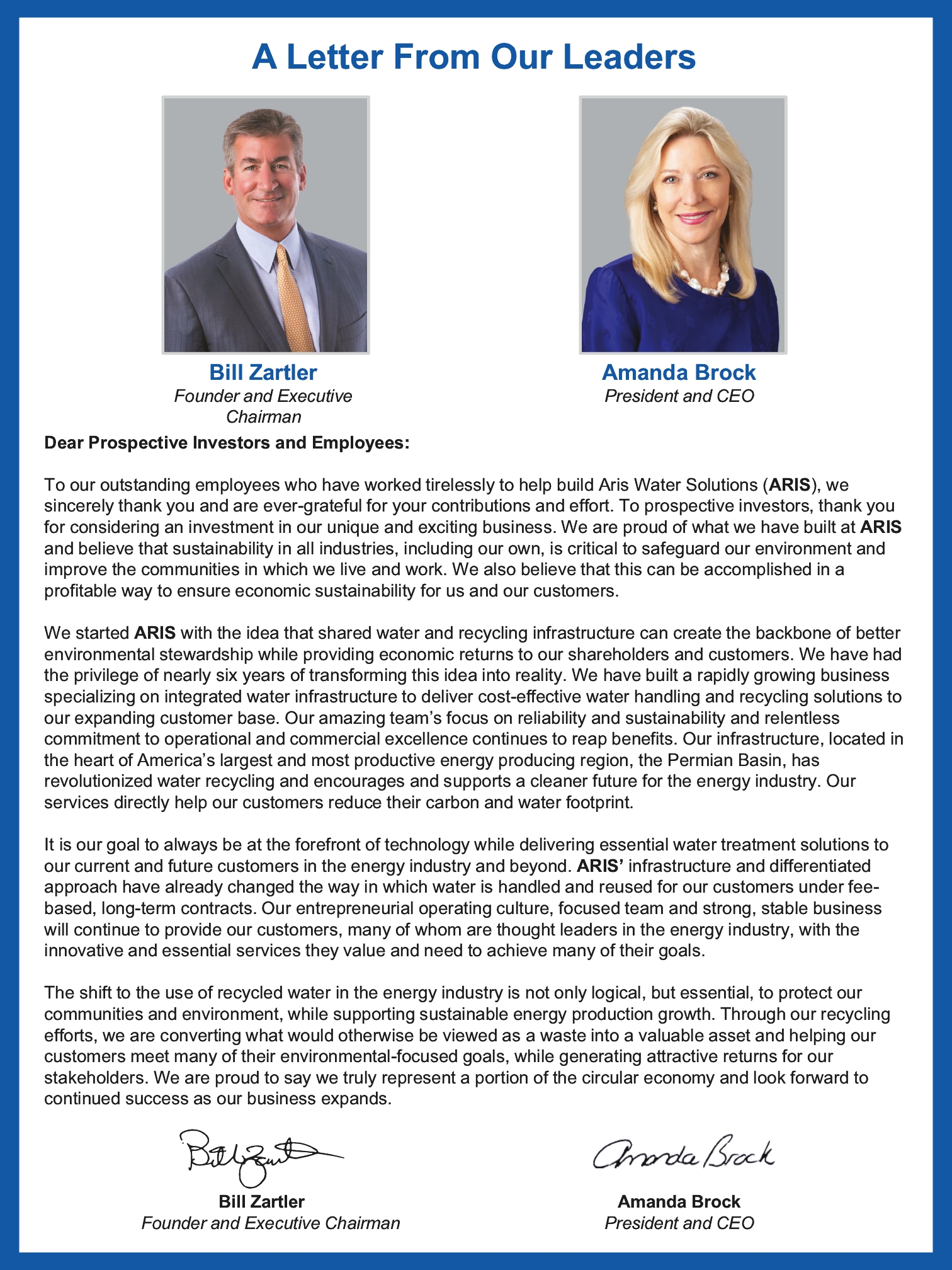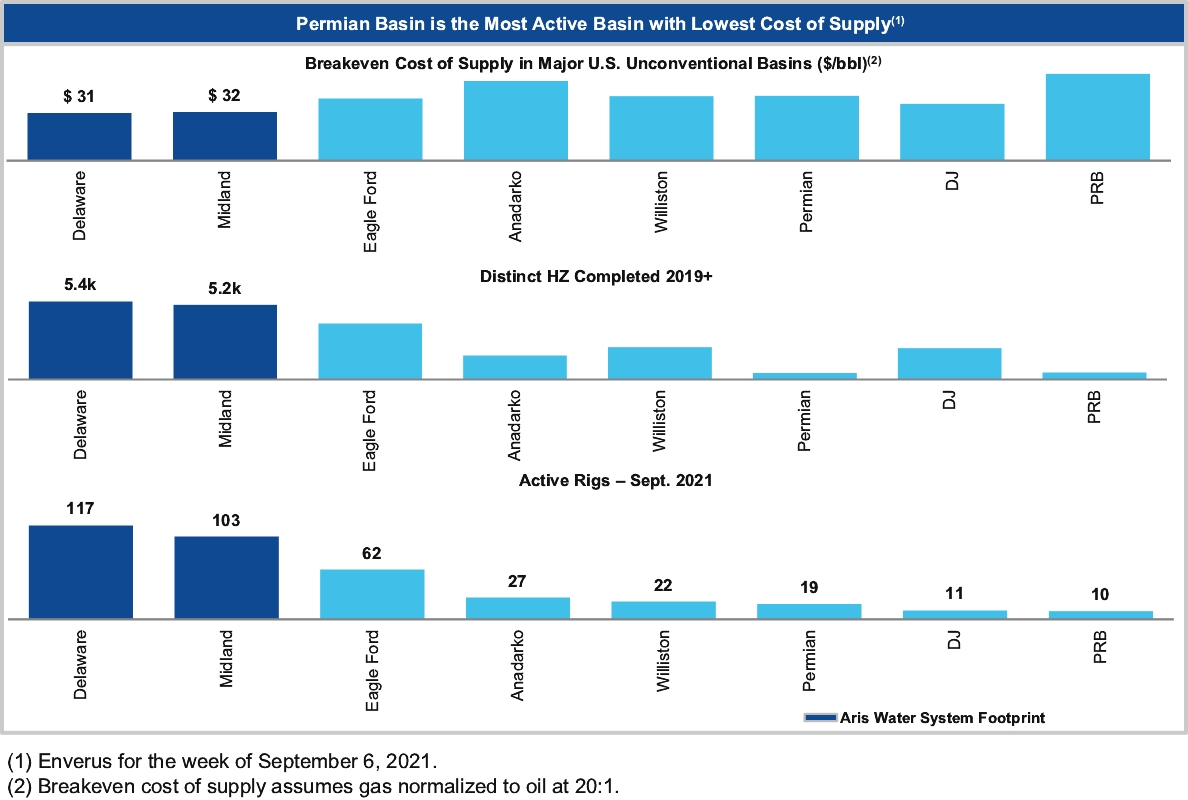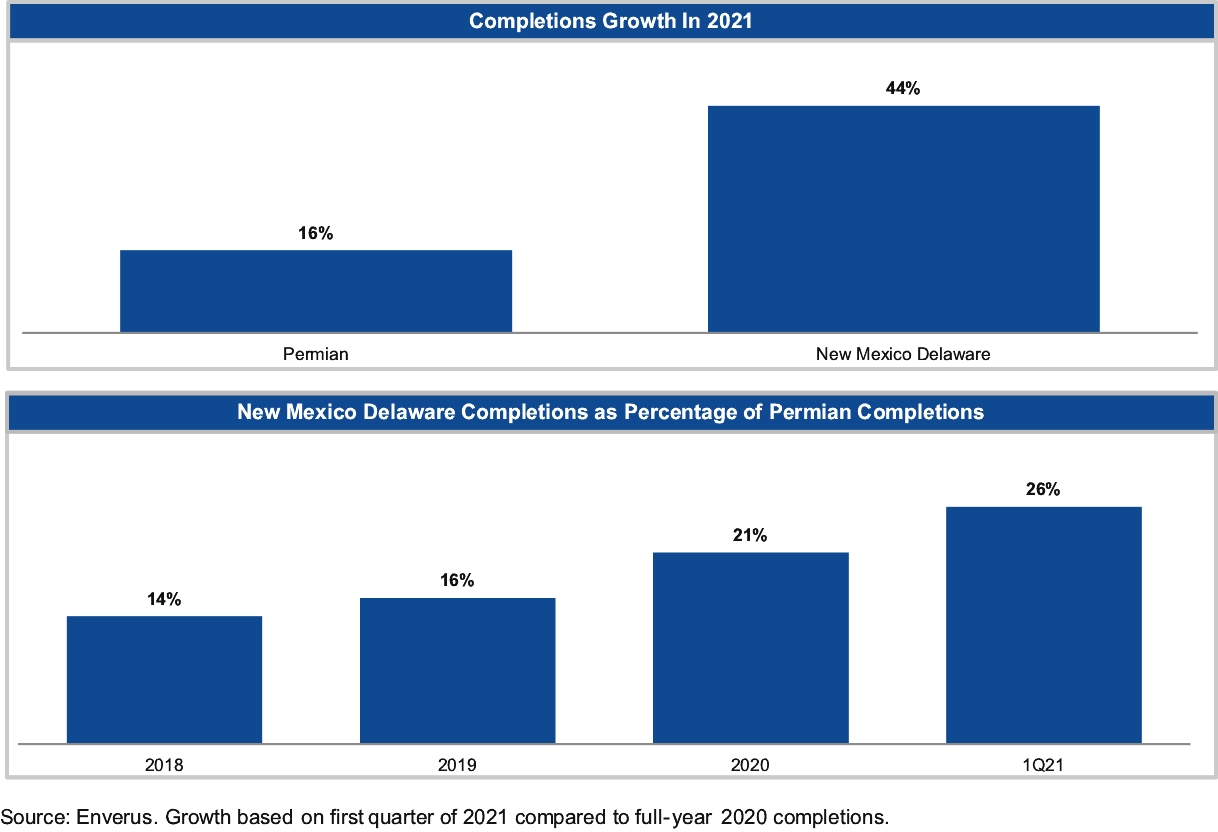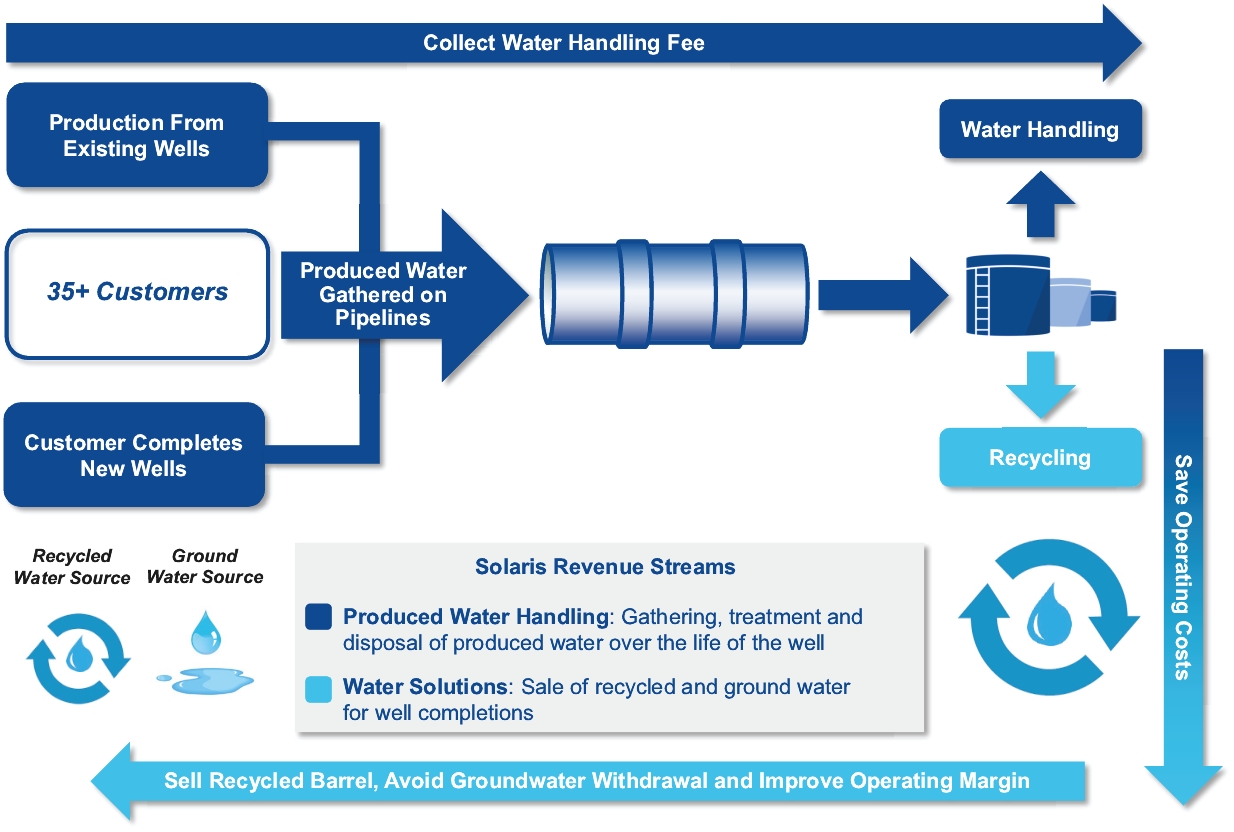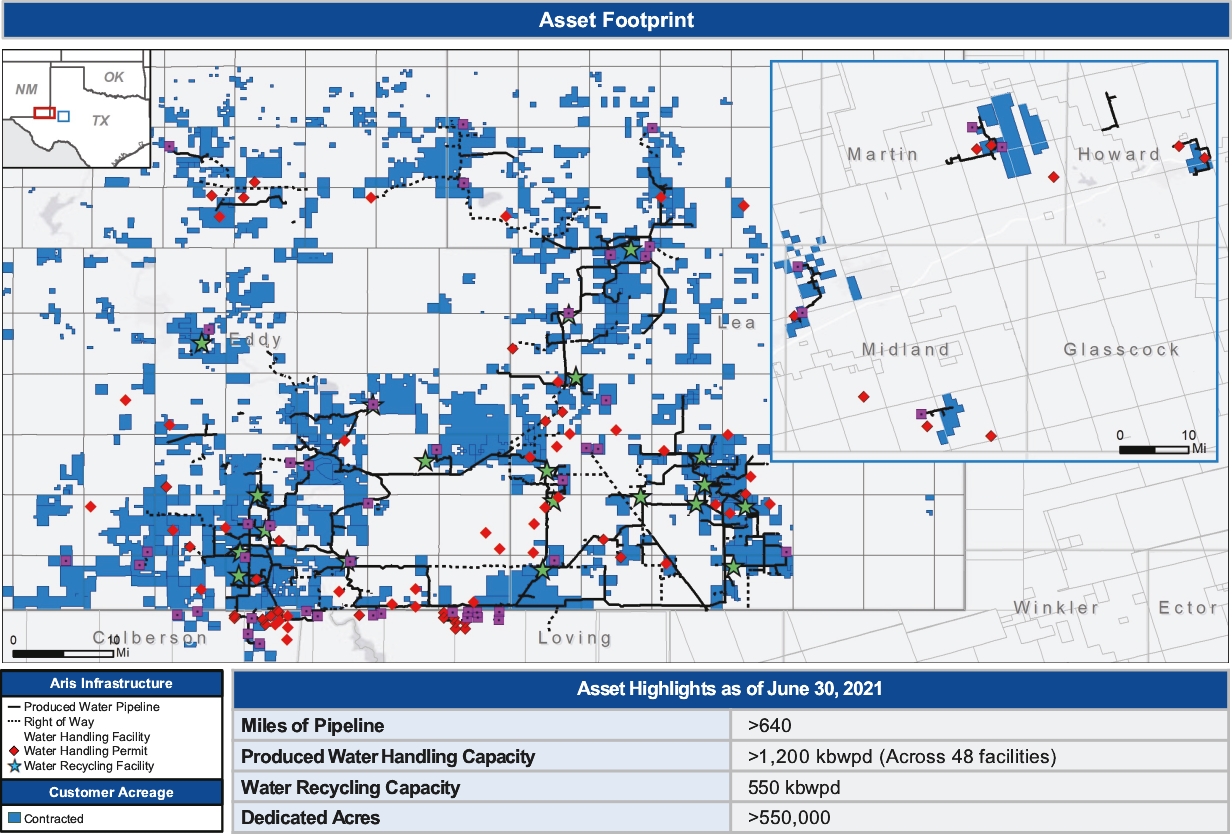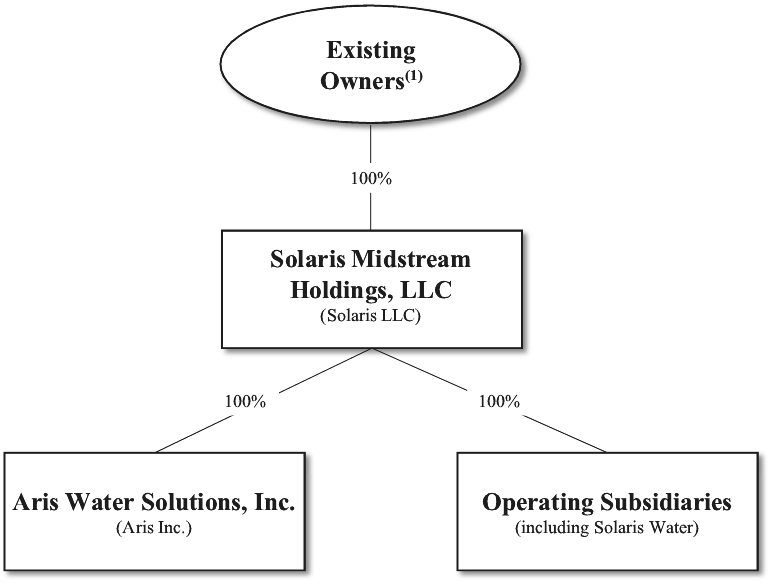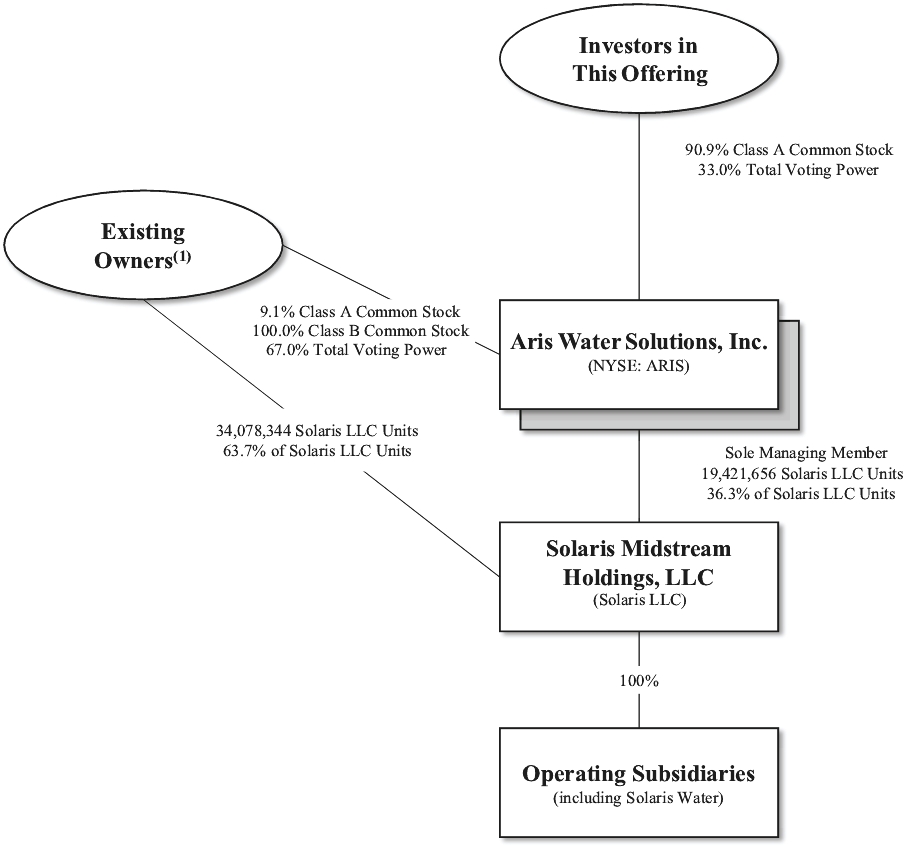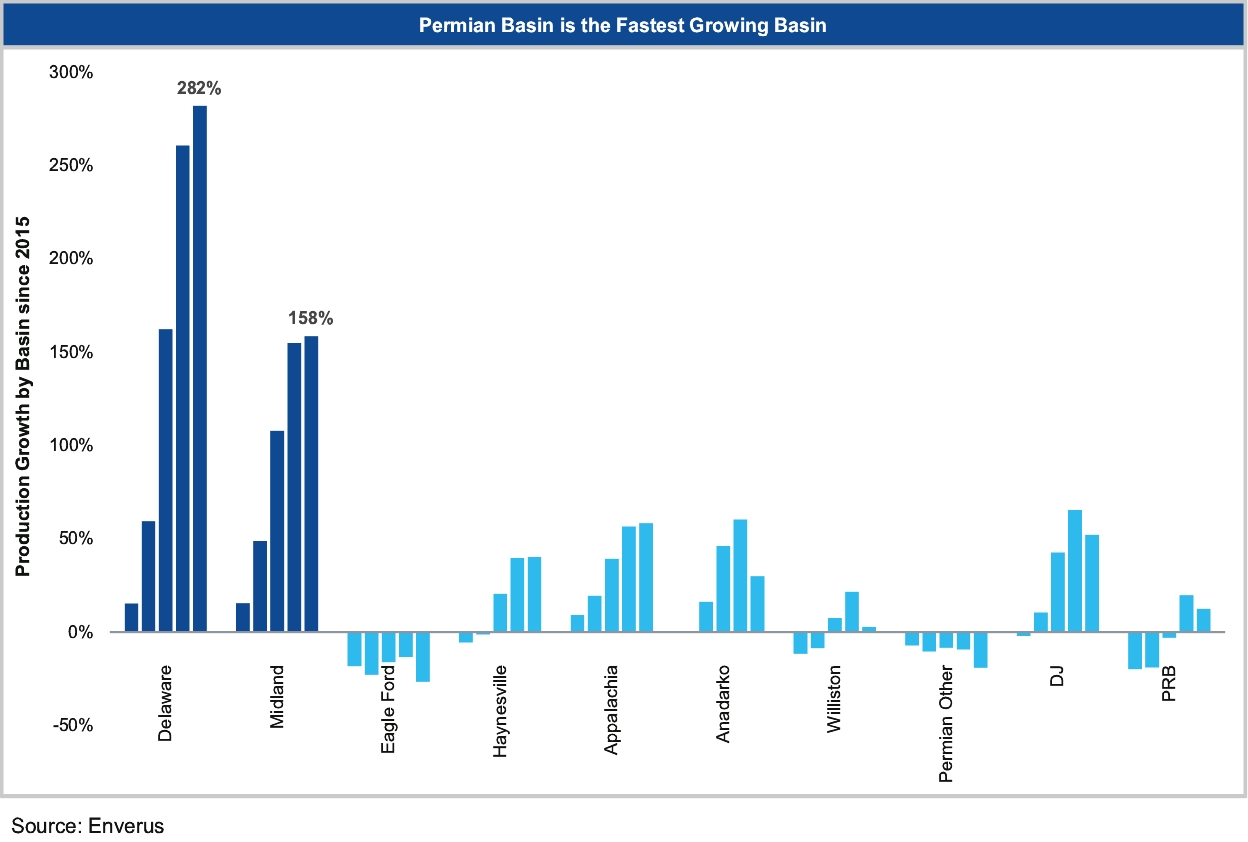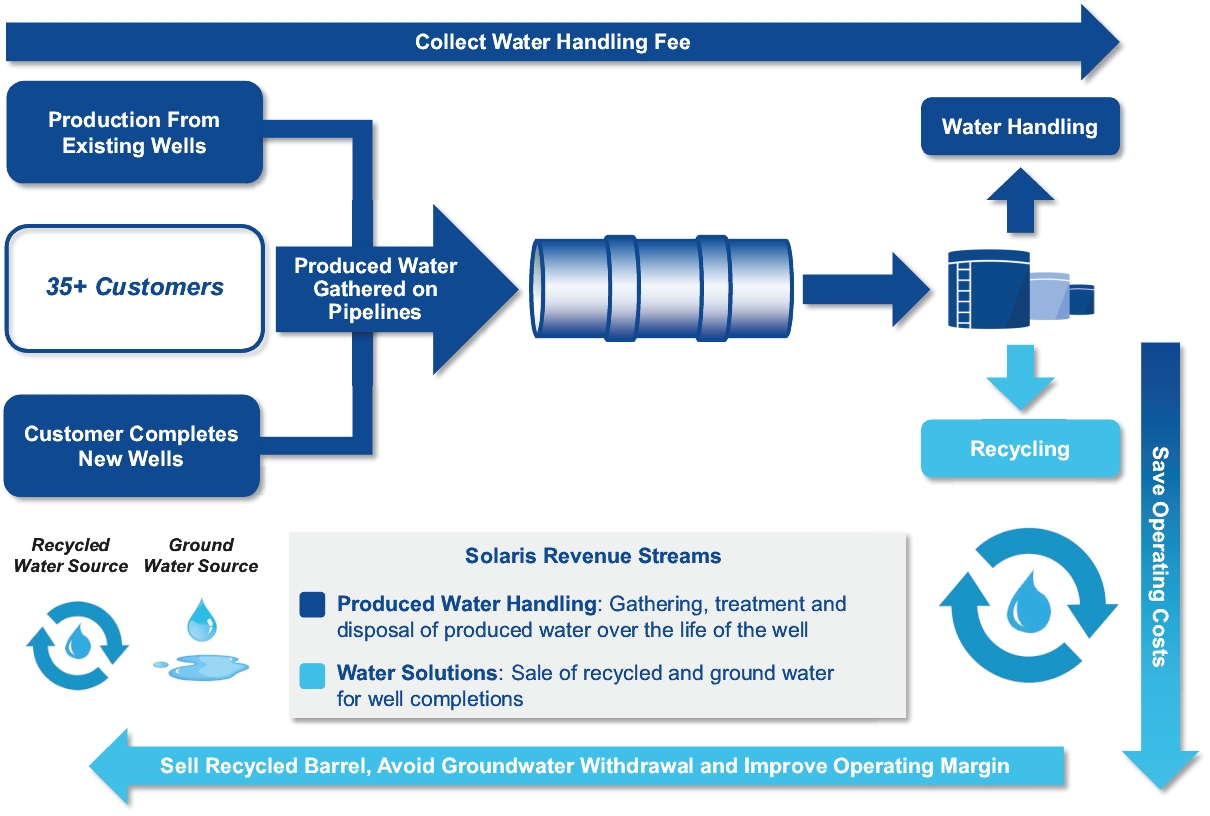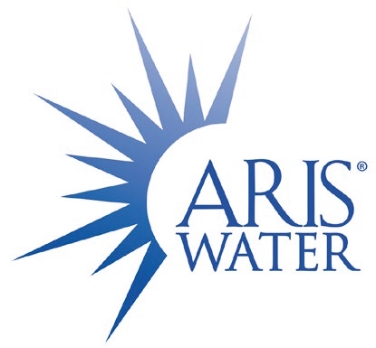As filed with the U.S. Securities and Exchange Commission on October 14, 2021.
Registration No. 333-259740
UNITED STATES
SECURITIES AND EXCHANGE COMMISSION
WASHINGTON, DC 20549
Amendment No. 2
to
FORM S-1
REGISTRATION STATEMENT
UNDER
THE SECURITIES ACT OF 1933
Aris Water Solutions, Inc.
(Exact name of registrant as specified in its charter)
Delaware | | | 1389 | | | 87-1022110 |
(State or other jurisdiction of
incorporation or organization) | | | (Primary Standard Industrial
Classification Code Number) | | | (I.R.S. Employer
Identification Number) |
9811 Katy Freeway, Suite 700
Houston, Texas 77024
(281) 501-3070
(Address, including zip code, and telephone number, including area code, of registrant’s principal executive offices)
William A. Zartler
Founder and Executive Chairman
9811 Katy Freeway, Suite 700
Houston, Texas 77024
(281) 501-3070
(Name, address, including zip code, and telephone number, including area code, of agent for service)
With copies to:
Hillary H. Holmes
Andrew L. Fabens
Gibson, Dunn & Crutcher LLP
811 Main Street, Suite 3000
Houston, Texas 77002
(346) 718-6600 | | | David J. Miller
Trevor Lavelle
Latham & Watkins LLP
301 Congress Avenue, Suite 900
Austin, Texas 78701
(737) 910-7300 |
Approximate date of commencement of proposed sale to the public:
As soon as practicable after this registration statement becomes effective.
If any of the securities being registered on this Form are to be offered on a delayed or continuous basis pursuant to Rule 415 under the Securities Act of 1933 check the following box. ☐
If this Form is filed to register additional securities for an offering pursuant to Rule 462(b) under the Securities Act, check the following box and list the Securities Act registration statement number of the earlier effective registration statement for the same offering. ☐
If this Form is a post-effective amendment filed pursuant to Rule 462(c) under the Securities Act, check the following box and list the Securities Act registration statement number of the earlier effective registration statement for the same offering. ☐
If this Form is a post-effective amendment filed pursuant to Rule 462(d) under the Securities Act, check the following box and list the Securities Act registration statement number of the earlier effective registration statement for the same offering. ☐
Indicate by check mark whether the registrant is a large accelerated filer, an accelerated filer, a non-accelerated filer, a smaller reporting company or an emerging growth company. See the definitions of “large accelerated filer,” “accelerated filer,” “smaller reporting company” and “emerging growth company” in Rule 12b-2 of the Exchange Act:
Large accelerated filer | | | ☐ | | | Accelerated filer | | | ☐ |
Non-accelerated filer | | | ☒ | | | Smaller reporting company | | | ☐ |
| | | | | | Emerging growth company | | | ☒ |
If an emerging growth company, indicate by check mark if the registrant has elected not to use the extended transition period for complying with any new or revised financial accounting standards provided pursuant to Section 7(a)(2)(B) of the Securities Act. ☐
CALCULATION OF REGISTRATION FEE
Class A common stock, par value $0.01 per share | | | 20,297,500 | | | $18.00 | | | $365,355,000 | | | $33,868 |
(1) Estimated pursuant to Rule 457(a) under the Securities Act of 1933, as amended. Includes 2,647,500 additional shares of Class A common stock that the underwriters have the option to purchase.
(2) Estimated solely for the purpose of calculating the registration fee.
(3) The Registrant previously paid $10,910 of the total registration fee in connection with a previous filing of this Registration Statement.
The Registrant hereby amends this registration statement on such date or dates as may be necessary to delay its effective date until the registrant shall file a further amendment which specifically states that this registration statement shall thereafter become effective in accordance with Section 8(a) of the Securities Act of 1933, as amended, or until the registration statement shall become effective on such date as the Securities and Exchange Commission, acting pursuant to such Section 8(a), may determine.
